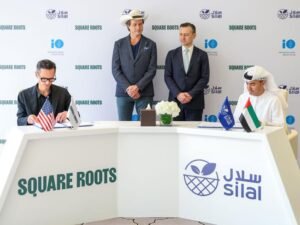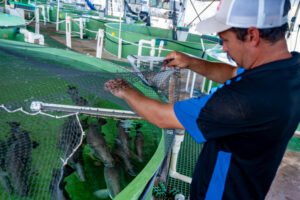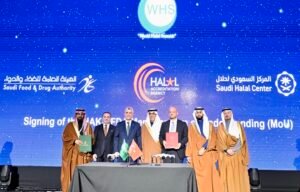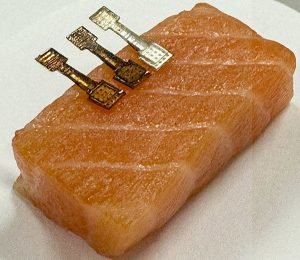Wednesday, 17 December 2025
Blockchain and battle for trust: How tech transforming seafood industry
Lars Moksness, Analyst on Consumer Behaviour at Norwegian Seafood Council As transparency and traceability become essential pillars of global food systems, the seafood industry is under increasing pressure to demonstrate…

Lars Moksness, Analyst on Consumer Behaviour at Norwegian Seafood Council
As transparency and traceability become essential pillars of global food systems, the seafood industry is under increasing pressure to demonstrate where its products come from, how they are sourced, and the conditions under which they are harvested. Today’s consumers are not just purchasing fish; they are also investing in values such as sustainability, ethics, and accountability.
To explore the motivations behind this shift and the technologies that are driving change, we interviewed Lars Moksness, an Analyst on Consumer Behaviour at the Norwegian Seafood Council. In this insightful conversation with NUFFOODS Spectrum, Moksness discusses the evolving expectations of seafood consumers, the role of blockchain in revolutionising supply chain traceability, and the impact of investor-led initiatives, such as FAIRR, on industry practices.
As food-tech partnerships expand and data-driven narratives gain importance, this discussion sheds light on how verified transparency could transform seafood marketing and consumer trust, while also addressing the challenges producers face during this digital transition.
Your latest research indicates that a significant majority of global consumers desire greater transparency in seafood production. Could you elaborate on the specific consumer behaviours or concerns that are fueling this demand?
It could be several, but one core aspect is the desire for transparency in the supply chain. This, in turn, has the potential to strengthen trust and brand reputation.
In what ways is blockchain technology revolutionising the seafood supply chain, and what key advantages does it offer to both producers and consumers?
According to FAO, for instance, blockchain technology can:
Purpose: To improve food safety, increase supply chain efficiency, and enhance brand reputation by providing a secure, transparent, and traceable system for food products.
Technology: Utilises blockchain technology to create a decentralised, immutable ledger that records every transaction and movement of food products.
Decentralised Ledger: Blockchain is a distributed digital ledger that records transactions across multiple nodes, ensuring data immutability and security.
Smart Contracts: Automated contracts that execute when predefined conditions are met, facilitating transactions without intermediaries.
Traceability: Blockchain can track seafood from catch to consumer, ensuring each step is recorded and verified.
Data Integration: Combines data from various sources (e.g., fishing logs, processing records) into a single, immutable ledger.
Compliance and Verification: Helps in verifying the legality of catches and compliance with regulations.
In short, it is the trustworthy data and records that imply the possibility for more efficiency, transparency and accountability across the value chain, and across several sources.
With the increasing involvement of technology companies such as IBM Food Trust and Provenance in this sector, what is your perspective on the evolving partnerships between the seafood industry and tech firms?
If the seafood industry does their due diligence while implementing this and other groundbreaking technologies, this will lead to increased transparency and efficiency, help build consumer trust and ultimately lead to a more sustainable and accountable seafood supply chain.
What role do initiatives like FAIRR, along with broader investor interest, play in encouraging seafood companies to adopt more robust traceability and transparency measures?
Initiatives like FAIRR are important in promoting enhanced traceability and sustainability in the seafood sector, as well as other sectors involved in animal production.
Considering these trends, how do you foresee the future of seafood marketing changing as producers increasingly share verified and data-driven product narratives with consumers?
Big question, and mostly predictions of the future fail, because the future is complex and affected by a range of events that we do not have control over or knowledge about yet. If I should venture a guess, though, one perspective could be linked to an increased willingness to pay for seafood that is verified through this technology. It would increase consumer trust.
However, if the implementation of these technologies is expensive, it could pose significant barriers for producers in lower-income regions, reducing their competitiveness.
Shraddha Warde
shraddha.warde@mmactiv.com
Technology
Nfinite secures funding to scale up breakthrough paper packaging solution
Dec 17, 2025 | Company News
Silal–Square Roots partnership uses AI to boost sustainable food production
Dec 17, 2025 | Company News
Food Testing
Australia’s Humpty Doo Barramundi farm to achieve ASC certification
Dec 08, 2025 | Australia
SFDA and Turkish Halal Accreditation Agency forge strategic partnership
Dec 05, 2025 | Food
Fish freshness easily monitored with a new sensor
Dec 04, 2025 | Food Safety and Testing
More Popular
Nfinite secures funding to scale up breakthrough paper packaging solution
Dec 17, 2025 | Company News
Silal–Square Roots partnership uses AI to boost sustainable food production
Dec 17, 2025 | Company News
Korea's Samson Food broadens seafood portfolio with hwangto salt-based products
Dec 17, 2025 | Company News






